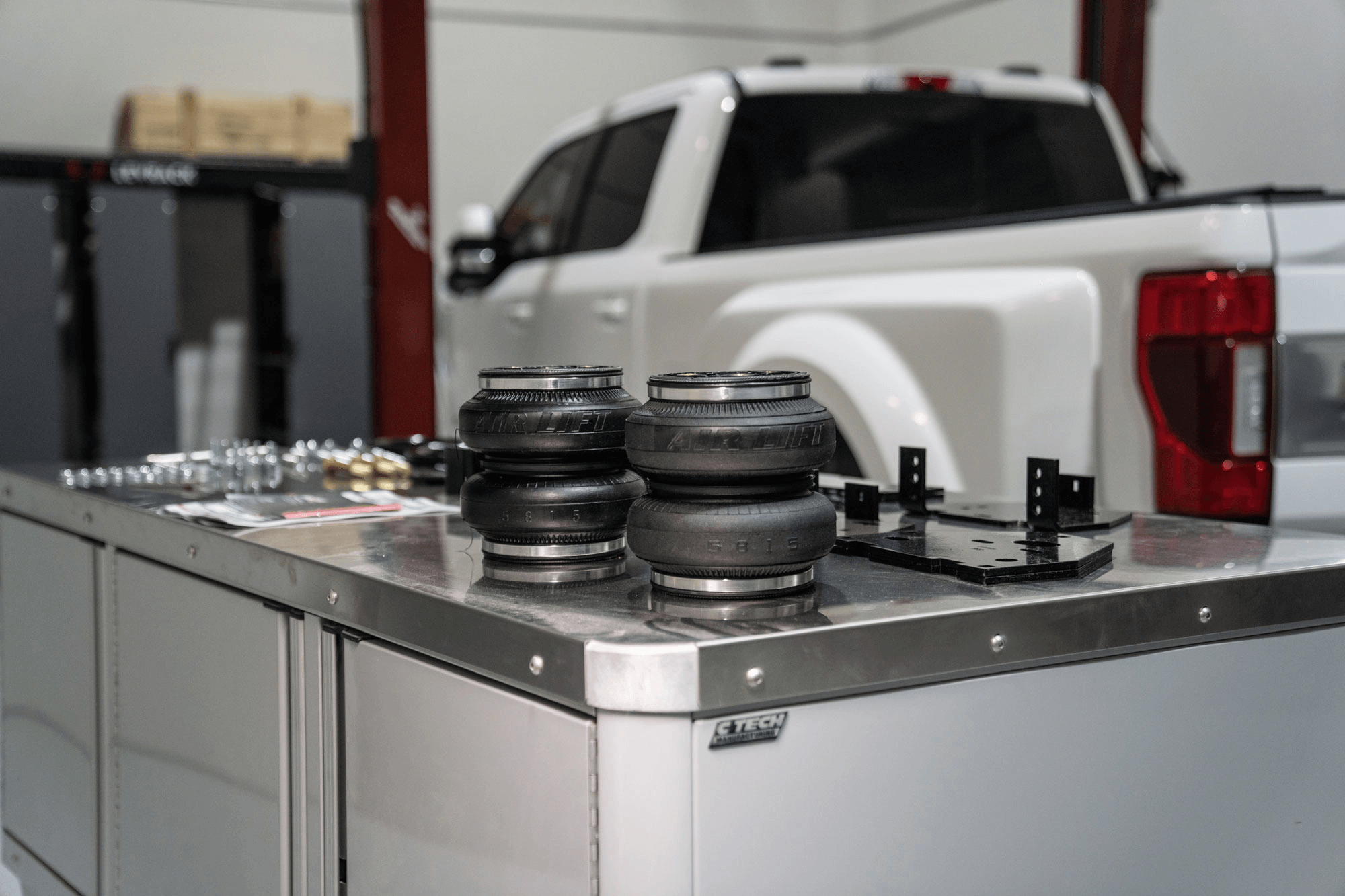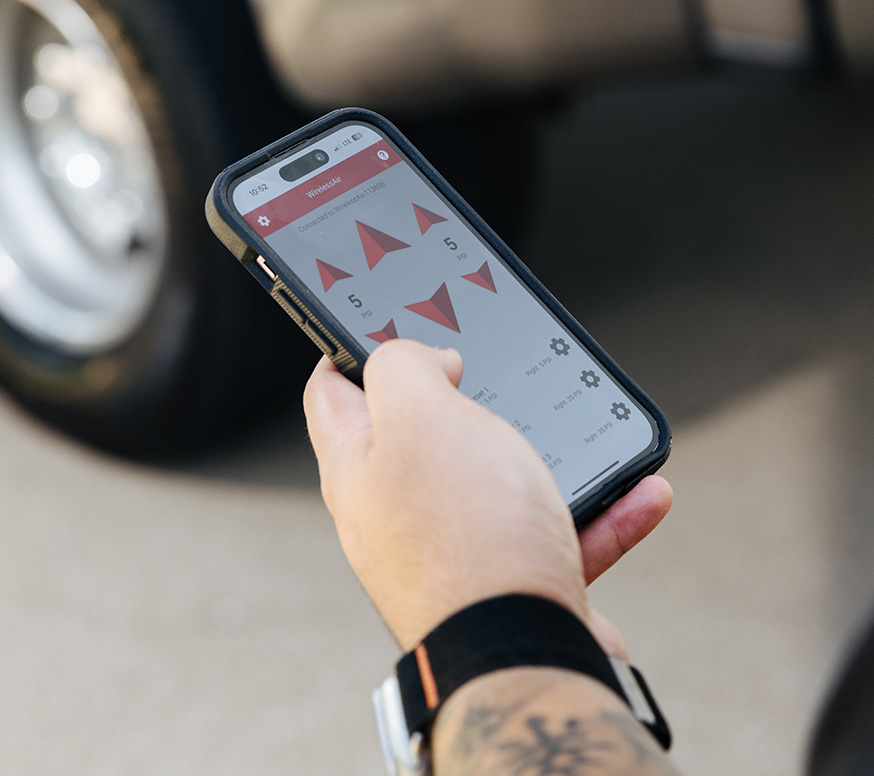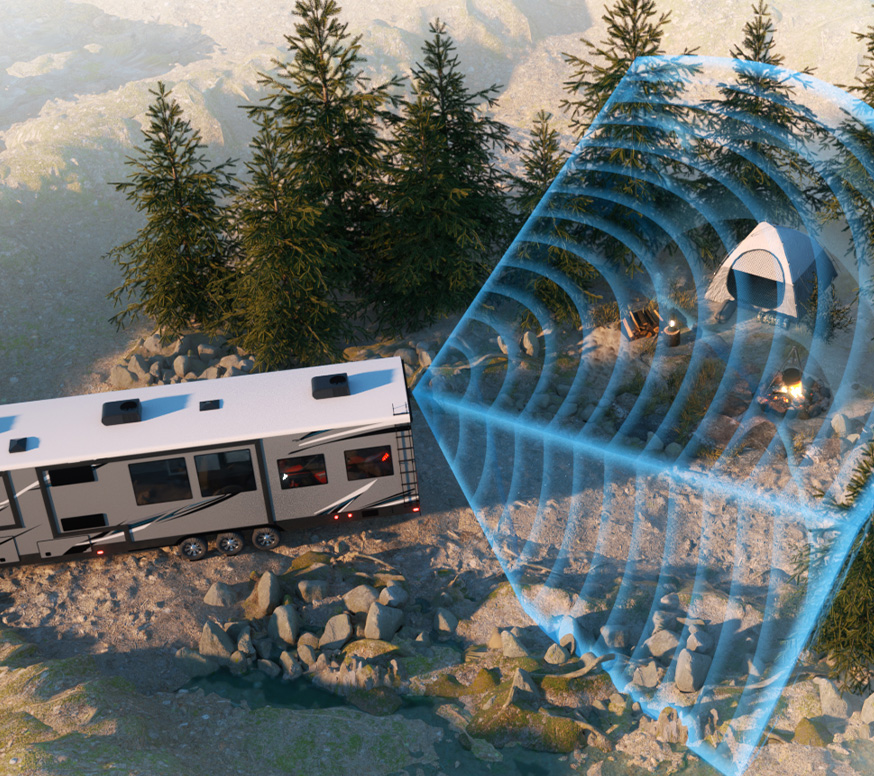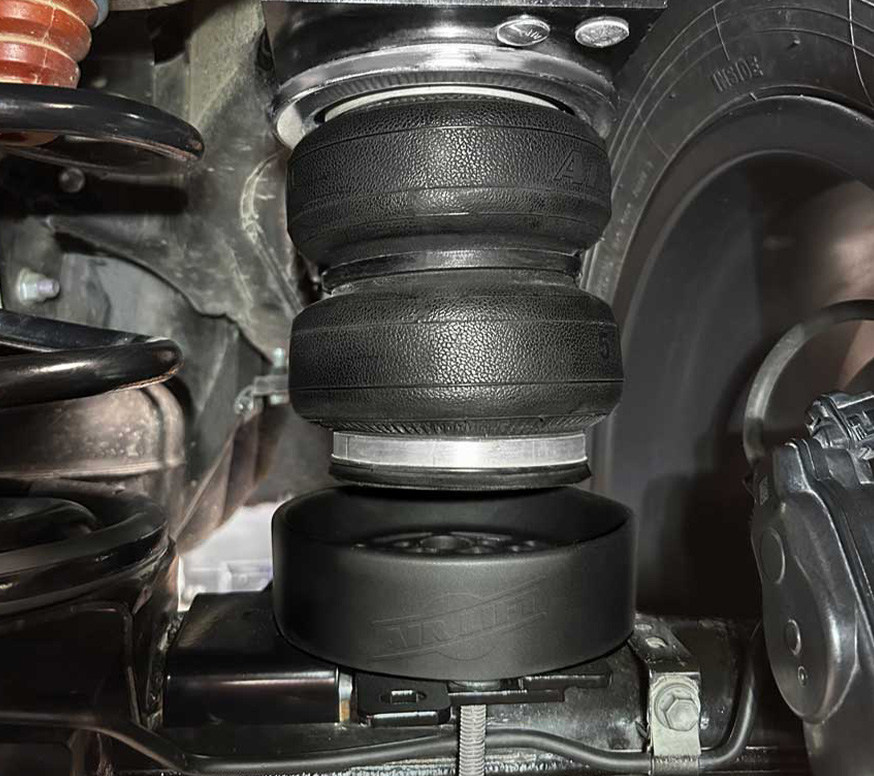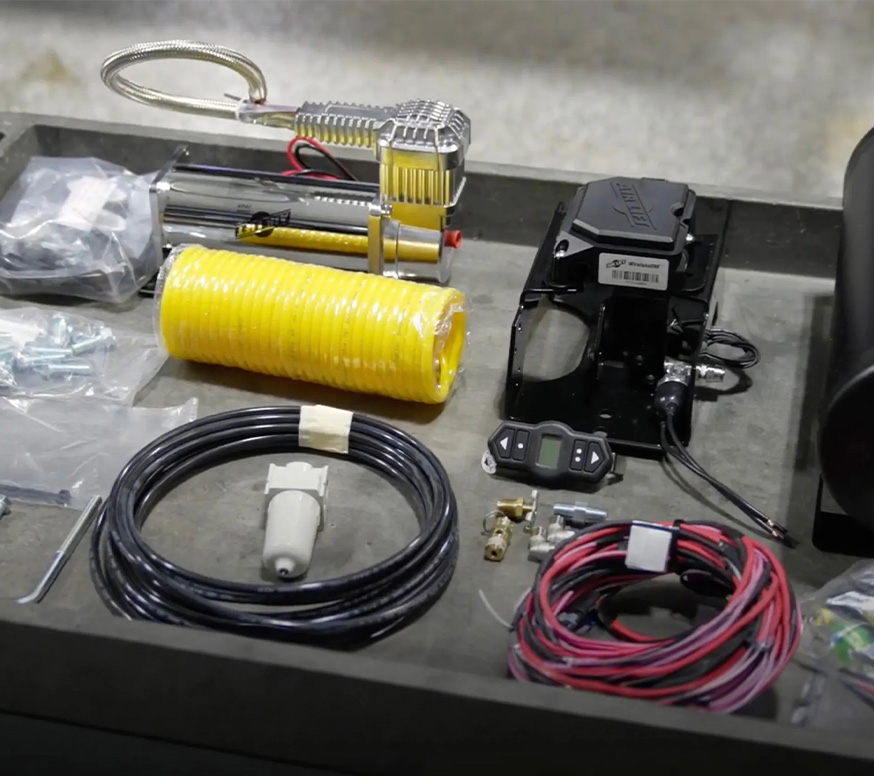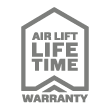
The Driving Dynamics of Towing a Trailer
10/7/2022
The best way to maximize driver control when towing is by keeping your vehicle level. Vehicles are designed with level suspension, and they are engineered to operate in the safest manner with that level suspension. When vehicles carry heavy loads, they develop tendencies to bottom out, develop trailer sway, develop a rough ride, experience light steering feel and develop incorrect headlight aim and the tendency to bounce and buck.
Air Lift Load Support Springs keep your vehicle level under heavy loads while remaining under the Gross Vehicle Weight Rating (GVWR). Whether you are carrying a load of heavy stones, towing a fifth-wheel trailer or attaching a snowplow to the front of your vehicle, Air Lift Load Support Springs will keep your vehicle level, maximizing driver control and vehicle safety.
Tips to consider when towing a trailer.
It is important to recognize when you are towing a trailer behind your vehicle that your normal driving habits need to be reconsidered.
Consider your mass
Your vehicle will weigh significantly more than normal, so driver input needs to be adjusted accordingly. The distance needed to slow and stop your tow rig will be increased due to the extra weight of your vehicle.
The best ways to mitigate your tow rig’s increased stopping distance include looking farther ahead on the road to allow adequate distance to slow your vehicle safely and keeping a safe distance between your rig and the vehicle ahead of you so you will have ample time to react should the lead vehicle stop suddenly.
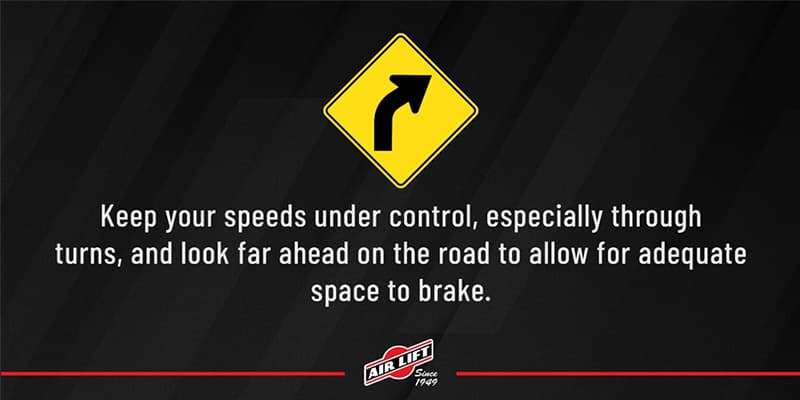
Additionally, your vehicle’s weight will have an impact on handling. Depending on the size and shape of your load, your tow rig may have a significantly higher center of gravity than normal, so make turns slower than you would in a vehicle not carrying a load.
Managing Crosswinds
Towing a trailer vastly increases the vertical surface area of your vehicle, and when winds whip against all that surface area, you can feel the force of the wind pushing your vehicle and trailer back and forth. The National Highway Traffic Safety Administration (NHTSA) advises using manufacturer-recommended towing gear and keeping tires inflated to the manufacturer-recommended pressures to prevent excessive sway in crosswinds.
When battling against crosswinds, the NHTSA recommends the following behaviors
- Lift your foot off of the accelerator, but do not apply the brakes unless you are in danger.
- Slow down. Moderate speeds produce less strain on your vehicle and trailer, reducing the severity of trailer sway.
- Maintain steady control of the steering wheel, do not make any sudden steering adjustments.
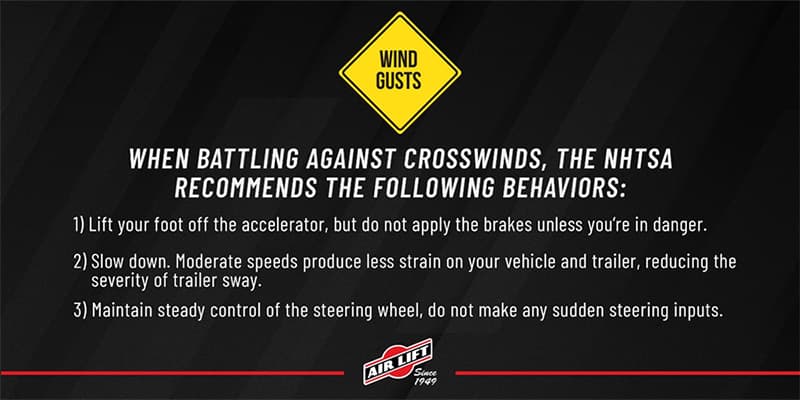
Use extra caution when changing lanes
Obviously, towing a trailer extends the length of your vehicle. Changing lanes while towing is made easier with the addition of towing mirrors, which, depending on your tow vehicle, can be factory-equipped or may require aftermarket mirror extenders. Towing mirrors extend wider than a vehicle’s normal mirrors and provide the driver with better sightlines of and around their trailer.
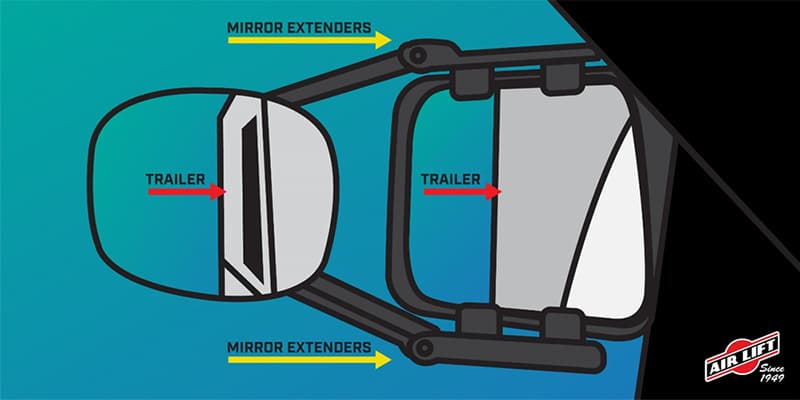
When changing lanes, be sure there is an adequate gap to allow your entire rig to clearly enter the other lane without obstruction. Take your time before changing lanes to ensure the space you are trying to merge into is not occupied by a motorist or cyclist. Once you have initiated the merge, proceed gradually in case there is a vehicle that you may not have seen or that may have cut into the lane without your knowledge. This is an obvious consideration, but it is a great way to stay safe and minimize unnecessary stress on the road.
Backing up with a trailer
If you can see more of the trailer in one mirror than the other, steer toward that side to straighten out. If you keep the trailer equally visible in both side mirrors, you are reversing in a straight line.
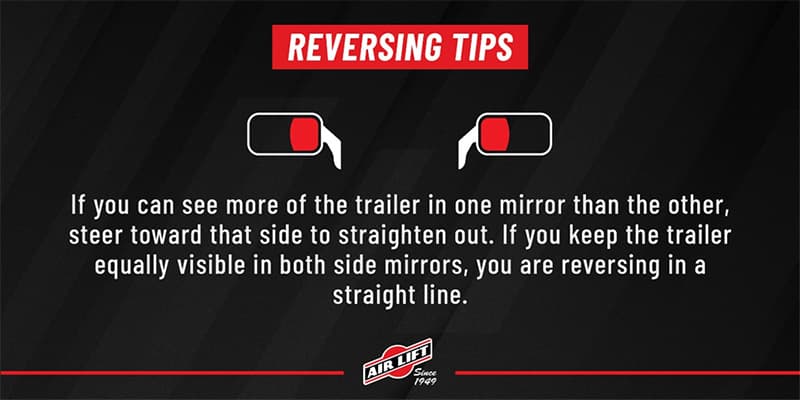
Reversing while towing a trailer is tough, so take the maneuver slowly and remember these tips and you will be successful.
- To reverse with a trailer safely and successfully, it is smart to have someone guiding you from outside of the vehicle. If that is not possible, just be sure you have a clear view of the space you are entering so you don’t hit anything or anyone.
- If you are trying to reverse in a straight line, watch your trailer in your side mirrors.
- If you are trying to turn while reversing with your trailer, start by slowing down. The trick is keeping a level head while considering multiple factors.
- For example, if you want the trailer to turn right as you reverse
- Grab the wheel at the midpoint on the bottom rim.Move your hand to the right to turn the trailer right.Move your hand to the left to turn the trailer left.Once your trailer has gotten on the intended path, slowly begin straightening out the steering in the same arc that the trailer took.Moving slowly and keeping steering inputs under control are great ways to keep everything safe.
Think of your trailer as a wheelbarrow. If you want to turn a wheelbarrow to the right, you must move the handles to the left to point the front in the desired direction.
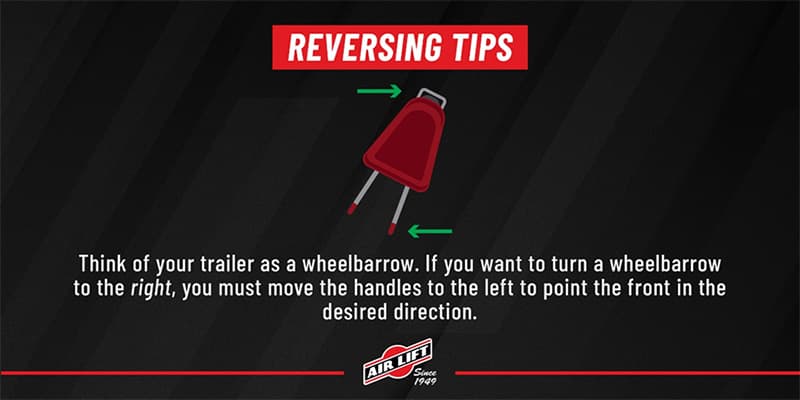
Considering these features of a tow vehicle and trailer will demystify and simplify the task of towing. Ultimately, keeping speeds under control and remaining calm will be your two biggest assets regardless of the towing challenge you are facing.
Keep calm, stop the squat and be safe out there!
